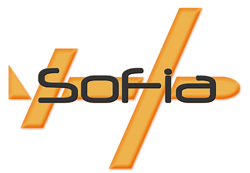Flying out of danger on autopilot
Various airborne terrorist attacks in recent years have highlighted the exposed nature of air-transport systems. One response to this was to improve security for EU airlines by means of on-aircraft products and systems. Should the off-aircraft security systems fail, the aim was then to see what on-board systems could be developed to reduce or eliminate the threat. This was the goal of the EU-funded 'Safe automatic flight back and landing of aircraft ' (SOFIA) project. It was set up to continue the work of the SAFEE SP3 project that had advanced a flight reconfiguration function (FRF) system that automatically returns the aircraft to the ground if it comes under a security threat. The SOFIA consortium comprised nine organisations from seven European countries. The project was divided into four stages: assessing, designing, developing and validating an FRF system. It developed the FRF concept into a practical system that, in the event of a security emergency such as a hijack, would safely and automatically take over the piloting of the plane and land it safely at the nearest airport. The FRF system developed in the SOFIA project proposes a solution to one of the biggest challenges for future aviation: how to make aircraft more secure, especially in emergency situations. The researchers’ achievements have advanced aviation security and opened up new opportunities for flight applications in the future.







